Rondo 博客
謝謝來到Rondo的博客。2009美國十個房價最適合居住的城市(收藏 附房價和收入)
1. Des Moines, Iowa
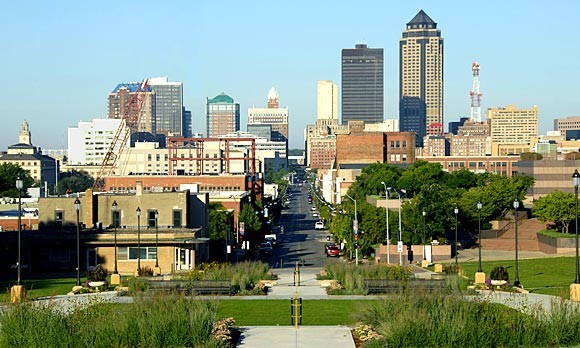
Des Moines may be one of the best and most overlooked places to jump-start your career. The economy of this Midwestern state capital is solid, with a large number of well-paying jobs in the insurance, bioscience and agribusiness fields. Yet the median house costs just $150,000. Forbes has ranked it one of the best places for business and careers three years running.
It has some of the cleanest air in the country, its residents report low stress levels and there’s enough outdoor recreation, culture and fine art to keep most people happy (its Art Center was designed by I.M. Pei). “There’s so many things that are accessible here,” says Lauren Burt of the Greater Des Moines Partnership. “There’s a lot of volunteerism and ways to be engaged with the community.”
Cons: The extremes in weather might come as a shock to many relocating here. Winters are very cold, and there’s no shortage of tornadoes and floods. Moreover, it’s relatively isolated, with the nearest big cities — Omaha, Neb., and Minneapolis — an hour-and-a-half and three hours away, respectively. Plan on bringing your car; there’s not a lot of public transportation.
| Population | 547,911 |
| Affordability index | 2.70 |
| Unemployment | 5.5 |
| Job growth | -1.43% |
| Median home price* | $150,100 |
| Home price appreciation** | -0.57% |
| Cost of living index | 85.4 |
| Median household income | $55,545 |
| Commute time (mins.) | 21.6 |
| % commutes greater than an hour | 2.63% |
2. Buffalo-Niagara Falls, N.Y.
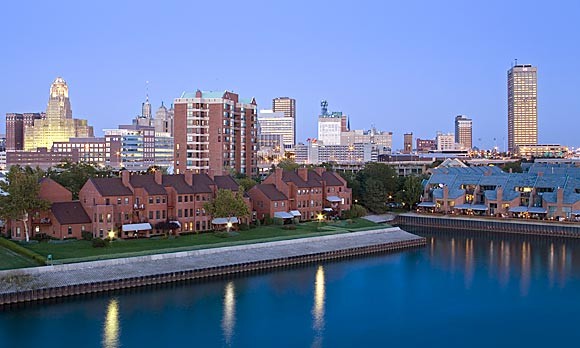
If you don’t mind cold, cloudy weather, the Buffalo-Niagara Falls area can deliver a lot of history and culture at a bargain price.
The Queen City of the Great Lakes, renowned for its architecture by Frank Lloyd Wright and Louis Sullivan, boasts some of the nation’s most affordable housing — the average home price is $115,400. Its job base has diversified from autos and steel to pharmaceuticals and financial services.
On weekends, you’ll have plenty of culture and entertainment with sports teams such as the Buffalo Bills, the large Albright-Knox Gallery and the free festivals and concerts offered regularly. And the Buffalo metro area has 59 miles of coastline along two Great Lakes and the Niagara River, including a 289-mile towpath for bikers leading to Albany. Indeed, the city considers pedestrians and bicyclists in all of its road projects, and mass transit is heavily used. All of this is starting to pull younger people back to this town.
“We have had to overcome the image that we were just falling-down buildings, chicken wings and snow,” says Tom Kucharski, chief executive officer of the Buffalo Niagara Enterprise, an economic development group.
Cons: There is a lot of snow — about 90 inches of it a year — as well as a lot of cloudy weather, an older population and a declining base of some higher-paying manufacturing jobs.
| Population | 1,128,127 |
| Affordability index | 2.56 |
| Unemployment | 8.6 |
| Job growth | -2.83% |
| Median home price | $115,400 |
| Home price appreciation | 1.21% |
| Cost of living index | 88.6 |
| Median household income | $45,127 |
| Commute time (mins.) | 22.9 |
| % commutes greater than an hour | 3.20% |
3. Oklahoma City
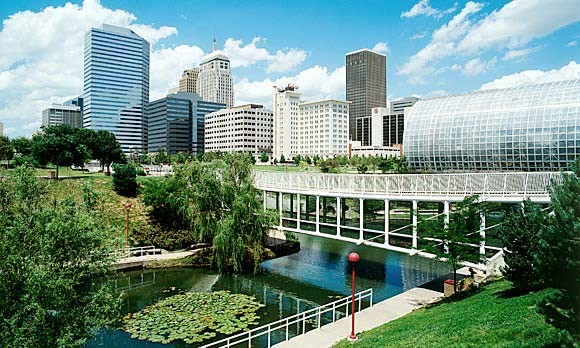
This Great Plains city has everything someone just starting out in his or her career needs: a large number of oil, gas and agricultural jobs, a low cost of living and short commute times. Its economy is so robust that Forbes called it America’s most recession-proof city last year. Because graduates can find a job here, a higher share of the population is under 35 — great news for singles.
There’s not a lot of breathtaking landscape in this table-flat land, nor is it a cultural mecca, but there are a number of large colleges and universities in this state capital, including the University of Oklahoma, to provide sports action and live entertainment.
And, according to commenter “Once a Soldier,” posting on Sperling’s Best Places Web site, there are some good local places to eat, and an easy-to-navigate highway system that makes getting from one part of town to another fairly easy.
Cons: This dusty city is challenging for those with allergies, and its weather tends to swing to extremes; from blistering hot days in the summer, to floods and tornadoes in the spring, to ice storms in the winter. Moreover, a lot of people here smoke and claim not to eat very healthfully, giving it a higher concentration of heart disease than the national average.
| Population | 1,192,502 |
| Affordability index | 2.89 |
| Unemployment | 5.9 |
| Job growth | -0.44% |
| Median home price | $128,300 |
| Home price appreciation | -0.34% |
| Cost of living index | 80.6 |
| Median household income | $44,449 |
| Commute time (mins.) | 24.1 |
| % commutes greater than an hour | 3.89% |
4. Scranton-Wilkes-Barre, Pa.
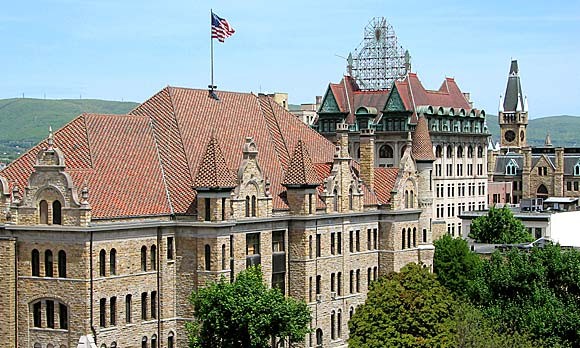
You might recognize this city as the dreary backdrop for NBC’s hit show The Office. But if you have a steady job, you can live well in these safe cities for a bargain price.
Beautiful Victorian homes in Scranton and Wilkes-Barre, which is about 100 miles from New York City, sell for about $150,000, Sperling says.
The area was built on coal, and piles of coal tipple still dominate the view between Scranton and Wilkes-Barre. However, the largest local employers are now government and health care.
The population is older — people 65 and over account for 18% — but there’s still plenty of entertainment to be found, from the large number of parks to arts and cultural venues. The Scranton Cultural Center showcases everything from its own Northeastern Pennsylvania Philharmonic to Broadway musicals. For rail buffs, there’s the Steamtown National Historic Site in Scranton. And for sports, most people flock to the Yankees, the farm team for the major-league baseball team of the same name.
Cons: The population here is older, and not particularly healthy. And it’s not diverse, with 94% of the population being non-Hispanic and white. Unemployment here is above the national average.
| Population | 1,128,127 |
| Affordability index | 2.56 |
| Unemployment | 8.6 |
| Job growth | -2.83% |
| Median home price | $115,400 |
| Home price appreciation | 1.21% |
| Cost of living index | 88.6 |
| Median household income | $45,127 |
| Commute time (mins.) | 22.9 |
| % commutes greater than an hour | 3.20% |
5. Minneapolis-St. Paul, Minn./Bloomington, Minn.-Wis.
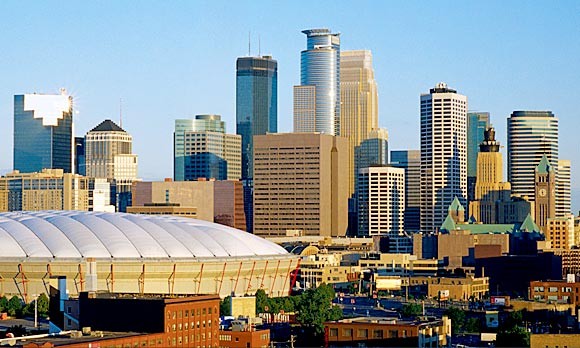
You can call this city a winter wonderland for smart, healthy people. It’s not flashy like New York or Los Angeles, but a high share of its residents have a college degree, and the Twin Cities have finished first or second in a ranking of the country’s most literate cities for four years running.
The area has three dozen degree-granting institutions, including the University of Minnesota, and the Minnesota Orchestra is considered among the best in the world. Its impressive lineup of theaters and art museums made it one of the “where to go next” places, right up there with Rome and Montenegro.
The area has one of the lowest rates of death from heart disease, and higher longevity, largely because of its active, mostly nonsmoking population. It has more parkland per 1,000 residents than any other large city in the country. Use of mass transit is high and traffic congestion is light. It receives good scores in air quality, public health and water quality, and it has several professional sports teams, including the NFL Vikings.
Cons: The major drawback can be summed up in three words: bone-rattling cold (the average high temperature stays below freezing for about three months of the year). Unemployment is higher here than some areas, and this big metro market is slightly isolated from other major cities.
“We are kind of in the middle of everything and not near much else,” says Minneapolis real-estate agent David Abele. Duluth, the nearest major city, is two hours away.
| Population | 3,228,224 |
| Affordability index | 2.84 |
| Unemployment | 7.9 |
| Job growth | -2.68% |
| Median home price | $184,500 |
| Home price appreciation | -5.20% |
| Cost of living index | 102.0 |
| Median household income | $65,057 |
| Commute time (mins.) | 26.2 |
| % commutes greater than an hour | 4.45% |
6. Little Rock-North Little Rock, Ark.
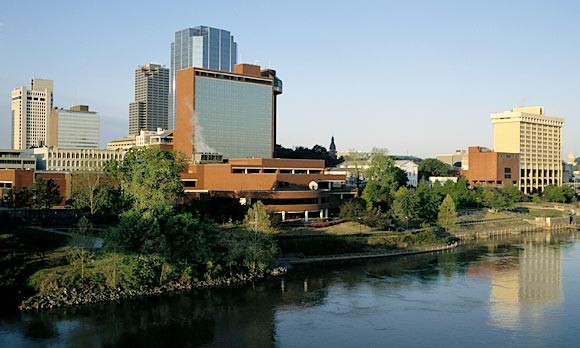
Little Rock is a little like that boy your parents wanted you to marry. The midsized city of 664,000 is stable and safe, with the second most diverse economy in the nation, according to Moody’s Investor Services. Unemployment is low and job growth is higher than in many other areas. And home prices here — with a median price of $134,600 — are starting to appreciate again.
It looks nice, too, with its lovingly preserved historic buildings downtown and Big Dam Bridge, supposedly the longest bridge in the world built just for pedestrians and bicycles.
The National Trust for Historic Preservation named it a “distinctive destination” for these reasons, and its rich history in the civil-rights movement. The University of Arkansas campus provides culture and entertainment in a Southern climate, and there are several minor league sports teams, a zoo and museums, as well as hiking in the nearby Ouachita Mountains.
Cons: Entrenched poverty means crime is a serious problem in many neighborhoods, and metro residents have a low average life expectancy, despite the high number of physicians and medical specialists in the area.
| Population | 664,345 |
| Affordability index | 2.96 |
| Unemployment | 6.8 |
| Job growth | -3.77% |
| Median home price | 134,600 |
| Home price appreciation | 0.52% |
| Cost of living index | 84.5 |
| Median household income | $45,524 |
| Commute time (mins.) | 25.3 |
| % commutes greater than an hour | 4.45% |
7. Ogden-Clearfield, Utah

If you love the outdoors, and are looking for an inexpensive place to raise a family, the Ogden area just might be the place for you. Of course, it might help to be Mormon, or at least fairly conservative.
Two-thirds of this area’s residents belong to the Church of Jesus Christ of Latter-day Saints, and three-quarters of voters here chose John McCain in the 2008 presidential election, in part because of the city’s close ties to nearby Hill Air Force Base.
The economy here is in good shape, thanks to military and civilian employment at Hill and growing mix of technology, education and tourism jobs. And there are a lot of architectural marvels to be found here in Ogden’s historic districts.
Outdoor recreation is the star here, with skiing at the nearby Snowbasin Ski Area, which hosted the downhill events in the 2002 Olympics. And there’s an extensive trail system for hikers, bikers and cross-country skiers.
“The biggest plus to the area is the recreation,” says “JT,” posting on Bestplaces.net. “Wonderful hiking and fishing areas are very near Ogden in the summer … and Utah snow is very good.”
Overall, it’s a safe and healthful place to live, with low crime rates and high longevity among its residents.
Cons: Ogden can be hit with blizzards and dust storms. There’s a lot of freeway congestion, but a rail line between Salt Lake City and Ogden opened last year. And if you’re not a follower of the LDS faith — no smoking, drinking or caffeine — you could be inconvenienced. You won’t see a lot of coffeehouses. The Ogden metro area has only six state-owned liquor stores, and the nearest specialty wine store is in Salt Lake City.
| Population | 513,280 |
| Affordability index | 2.94 |
| Unemployment | 6.3 |
| Job growth | -3.79% |
| Median home price | $171,000 |
| Home price appreciation | -3.93% |
| Cost of living index | 93.4 |
| Median household income | $58,142 |
| Commute time (mins.) | 24.5 |
| % commutes greater than an hour | 6.03% |
8. Columbia, S.C.
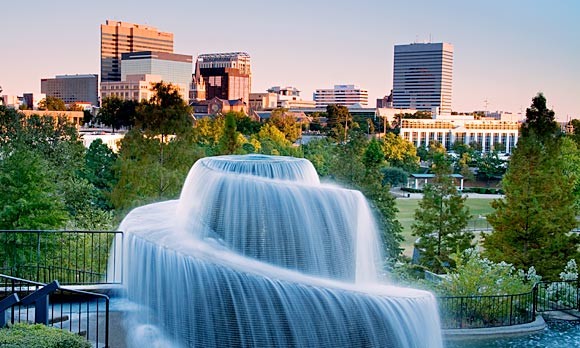
A graceful Southern city with many antebellum homes and college-town amenities, Columbia is a capital city with lots of historic charm situated along the Congaree River.
The city is home to the University of South Carolina, which provides entertainment and sports from the southern part of the clean, easy-to-navigate downtown.
The city has two entertainment districts: The Vista district boasts more than 50 restaurants, bars, hotels and condos, and the Five Points area is known for its nightlife.
The cost of living is low, due in large part to a median home price of $137,900. Winters are relatively mild, and there are only six days a year where the temperature is over 100 degrees. However, summers are long, hot and humid, and midsummer thunderstorms are frequent.
“There is a good bit of culture for a midsized city,” notes new resident “Tom,” posting on Sperling’s Best Places Web site. “I was pleasantly surprised at what a great place Columbia is to live.”
Cons: Columbia is a bit far away for air service and other big-city amenities. However, it is still within reach of Charleston and attractive beaches 120 miles down the coast, and Atlanta 200 miles west.
| Population | 718,641 |
| Affordability index | 2.90 |
| Unemployment | 9.3 |
| Job growth | -1.90% |
| Median home price | 137,900 |
| Home price appreciation | 1.03% |
| Cost of living index | 90.4 |
| Median household income | $47,560 |
| Commute time (mins.) | 26.2 |
| % commutes greater than an hour | 5.38% |
9. Houston-Sugar Land-Baytown, Texas
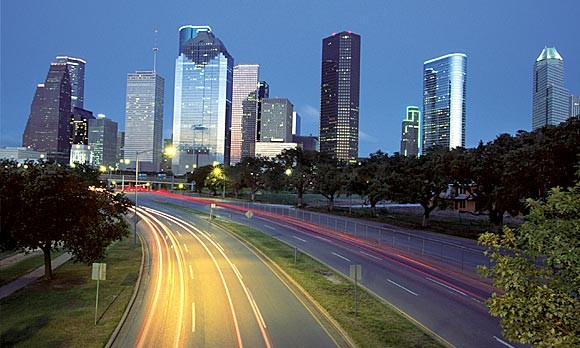
It may be the largest metro area on our list, with a population of 5.6 million, but it’s also in a dead heat with Little Rock for the most affordable. It’s also one of the best places in the country to find a job. Houston has become a global economic center, with great numbers of immigrants from Asia and Latin America, and is the 10th-busiest port in the world.
Houston’s job losses over the past year have been minor (2.08%), compared with most other major cities. Its strong oil and gas employment have helped this area ride out the recession better than other cities its size. It was named one of America’s recession-proof metros last year by Forbes.
And its revitalized downtown, large number of parks and rich cultural amenities and entertainment give residents lots of options for weekend fun. Of course, locals are most passionate about their pro sports teams: the Astros baseball team, the NFL Texans and the NBA Rockets. However, the city boasts plenty of art galleries and antique shops, too.
Cons: Built on former swampland, Houston is hot in the summer and particularly humid almost year-round. The city has some of the worst traffic congestion and worst air pollution because of its overwhelming sprawl (the area has very few zoning laws). And Houston has a high stress index, which takes into account rates of suicide, alcohol abuse, divorce and the rate of poor mental health. Violent and property crime are also serious issues throughout the metro.
| Population | 5,664,074 |
| Affordability index | 2.96 |
| Unemployment | 8.4 |
| Job growth | -2.08% |
| Median home price | $157,400 |
| Home price appreciation | 2.42% |
| Cost of living index | 82.4 |
| Median household income | $53,144 |
| Commute time (mins.) | 31.8 |
| % commutes greater than an hour |
10. Columbus, Ohio
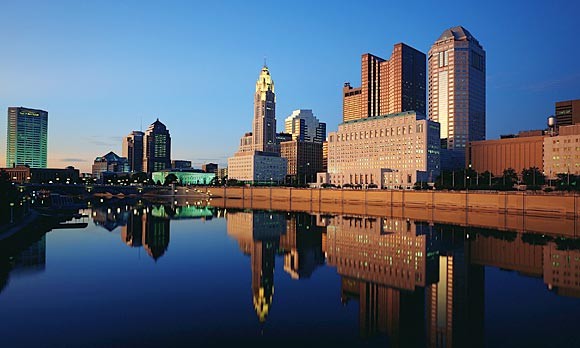
This is a great place to live if you like college towns and all they offer. Located in the geographic center of Ohio, Columbus houses Ohio State University, America’s largest college campus, according to Sperling, with 50,000 students. There are many other private, secular and technical colleges in the eight-county metro area, as well as a branch of the state’s other large school, Ohio University.
It’s a young place, with a relatively low number of its 1.7 million residents over 65. And it is surprisingly liberal, with a low number of people describing themselves as religious and a larger-than-average share of self-described gay households. It also made the list of the 20 most literate big cities in the U.S.
The city, with its lively, diverse downtown, is a leader in the movement to make city streets more pedestrian- and bike-friendly. Voters in Delaware County, north of the city, recently voted on a $37 million property tax levy to acquire more parkland. Those who love golf will love this city's high concentration of courses. And, of course, there are always the Ohio State Buckeyes to provide weekend entertainment, along with a collection of other minor league teams. This, however, is not a draw for everybody.
“From my experience, it seems as though people are more interested in talking about football than politics, the environment, etc.,” writes “Molly” about Columbus on Sperling’s site.
Cons: Unemployment and foreclosures are a drag on Columbus’ economy. However, jobs are being created faster here than in other parts of Ohio. The population is not active, and a high share of residents are obese. Moreover, violent crime is slightly worse here than the national average, and property crime is much worse.
| Population | 1,749,991 |
| Affordability index | 2.58 |
| Unemployment | 9.3 |
| Job growth | -4.23% |
| Median home price | $136,600 |
| Home price appreciation | -1.40% |
| Cost of living index | 92.4 |
| Median household income | $53,011 |
| Commute time (mins.) | 25.8 |
| % commutes greater than an hour | 4.44% |
來源:MSN




